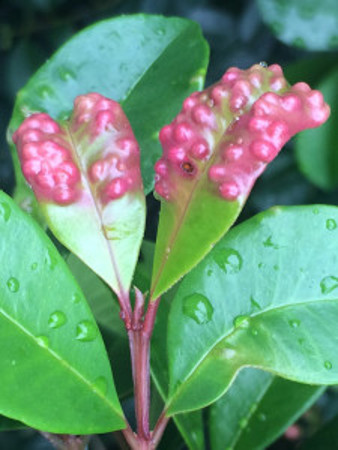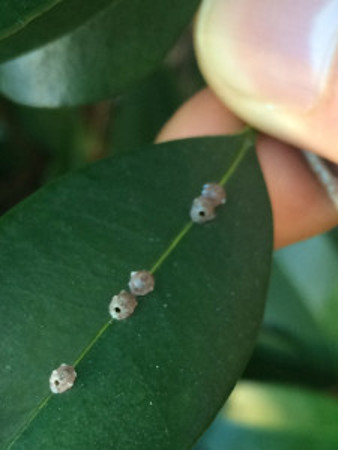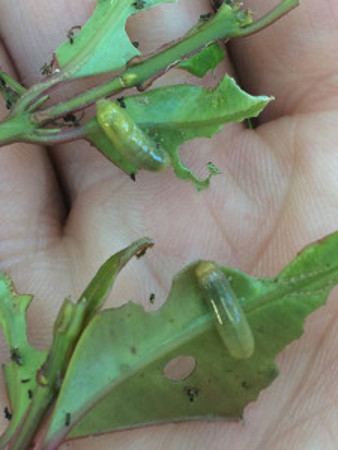Lilly Pillies
BackLilly pillies are a group of versatile trees and shrubs mostly native to the east coast of Australia often grown for their fluffy flowers and colourful berries. They make excellent hedges and screens as well as being used as feature plants in pots or garden beds. There are cultivars that grow from 75cm to 30m tall so there’s a lilly pilly for every spot in the garden!
Lilly pillies respond extremely well to pruning which has made them one of the most popular choices for hedging plants and topiaries.
Lilly Pilly Names
There are three different genus of plants which are commonly called lilly pillies (Acmena, Syzygium and Waterhousea) and from time to time they get moved around within these groups. For example Syzygium smithii was for many years called Acmena smithii and it’s very common to see it incorrectly named. Kinda makes things all a bit confusing!
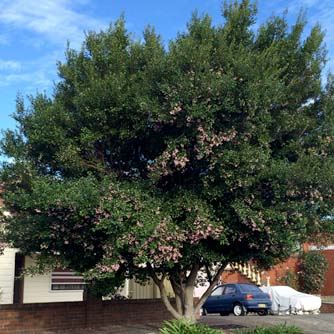
Lilly pillies can make great feature trees with their natural round shape
How To Grow Lilly Pillies
Lilly pillies can grow in full sun or shade, tolerate drought once established and will grow in a wide range of soils. Of course the more sun, water and nutrient rich soil you give them the faster they’ll grow which is worth keeping in mind if you’re after a quick growing hedge or screen.
Ideally choose a sunny position which has some protection from hard frosts or biting cold winds. Lilly pillies are tough when established but young plants will benefit from a little shelter. Improve the soil with organic compost and manure and if planting into heavy clay apply some gypsum as well.
Water your plants in with OCP eco-seaweed to help them settle and encourage new root development. Mulch with sugar cane mulch to retain soil moisture and keep weeds at bay. As it breaks down it will further improve the soil.
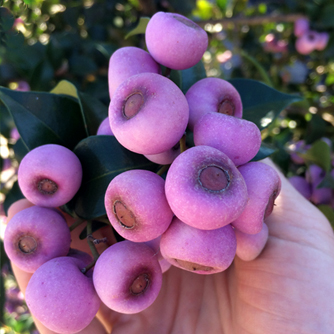
Close up of the berries of Syzygium smithii
Fertilising Lilly Pillies
To maximise the growth of young plants apply manure, compost or a certified organic pelletised fertiliser in spring, summer and autumn. In addition growth will be greatly enhanced with doses of OCP eco-seaweed and OCP eco-aminogro every 2-4 weeks during the same period. Winter applications can be given in warmer regions where plants are still active.
Established trees and hedges can just be fertilised in spring and autumn to keep them healthy.
Pruning Lilly Pillies
Larger lilly pilly types (trees and big shrubs) tend to naturally produce a nice shape and usually don’t need pruning unless you want to restrict their height or size. Smaller growing shrubs and potted specimens will respond well to tip pruning to encourage bushy growth.
With a new hedge do not let plants grow straight up to the desired height hoping that they will ‘fill out’ later on. Instead tip prune regularly on the top and sides to encourage dense growth from the base all the way up. If necessary use a string line for accuracy.
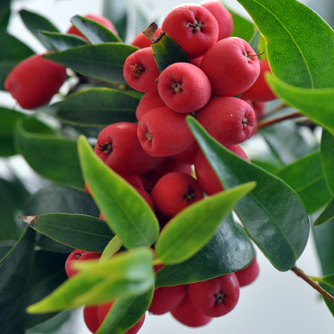
The bright berries of Syzygium leuhmannii
Pruning can be done at any time of the year with most lilly pillies producing flushes of attractive pink new growth as a result. A light tip prune is the most common method used with lilly pillies but they can take a hard pruning if needed to reduce height or size. In cooler climates new growth will be slow to appear during winter so plants will look bare if given a hard cut at that time of year. Ensure plants are well watered before and after pruning.
Pests & Diseases of Lilly Pillies
The most common problems that can arise with lilly pillies are:
- Psyllids – Some lilly pillies are frequently attacked by this sap sucking pest which can be difficult to eradicate. The species Syzygium australe and it’s many cultivars are very susceptible. Psyllids only attack new leaves causing distortions that look like small bubbles or pimples. Control can be difficult as the insect is well protected inside these bubbles. Gardeners have told us they’ve had success with regular sprays of OCP eco-oil combined with OCP eco-neem whenever new growth is present. We have not run trials ourselves so this isn’t approved on the product labels. Of course the easier option is to simply not plant Syzygium australe and it’s cultivars. The other lilly pilly types are usually psyllid resistant with only occasional small outbreaks.
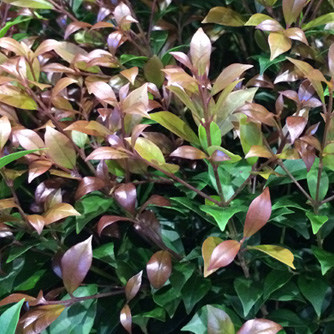
New foliage on the low growing 'Allyns Magic'
- Aphids and mites – these pests suck sap from the plant and be controlled with OCP eco-oil.
- Scale - another sap sucking pest. Spray with a horticultural oil to deal with the problem.
- Sooty mould – this is a secondary problem caused by sap sucking pests (like scale, mites and aphids). Once you identify and the control pest the sooty mould will dry up and flake away.
- Mealybugs – spray with OCP eco-neem and ensure thorough coverage to reach everywhere the mealybugs are hiding.
- Ants – if you notice lots of ants on your lilly pilly then it means you’ve got sap suckers present and the ants are feeding on their sugary excretions. Control the sap suckers (with either OCP eco-oil or OCP eco-neem, where applicable) and the ants will go away. You can speed things up by applying a band of horticultural glue around the base of trunks to restrict their movements.
- Lilly pilly beetle (Paropsides calypso) – this is a relatively new problem where leaves are eaten from the outer edges into the middle and plants end up looking very bare. Both the adult beetle and larvae feed on the leaves and can severely strip hedges and bushes. As a newly emerging pest there is little trial work that has been done but we’ve already had a few gardeners tell us they found success with a mix of OCP eco-neem and OCP eco-oil. We have not run trials ourselves so this isn’t approved on the product labels.

Purple berries of Syzygium oleosum
Top Lilly Pillies
With so many different lilly pillies to choose from these days it can be hard to pick one. Here’s a selection of proven winners to make things a bit easier:
Syzygium (Acmena) smithii ‘Allyns Magic’– Hardy, compact shrub with bronze coloured new foliage that grows to 50cm x 50cm. Responds well to shaping and is a great container plant. Only tolerant of light frosts.
Syzygium (Acmena) smithii minor ‘Cherry Surprise’ – Excellent hedging plant with attractive burgundy new growth. Grows to 3m x 1.5m.
Syzygium (Acmena) smithii ‘Goodbye Neighbours’– Very fast growing screening or hedging plant. Can grow up to 2m a year in ideal conditions. Ultimately will grow to 8m if not pruned.
Syzygium ‘Cascade’– Grows 2-3m high and 1-2m wide with lovely weeping branches. New growth is bright pink and produces pink powder puff flowers in summer. Like the other lilly pillies listed above it is rarely troubled by psyllids. It is a cross between Syzygium leuhmanii and S. wilsonii both of which are nice lilly pillies in their own right.
Waterhousea floribunda ‘Sweeper’ – grows 15m x 5m. A graceful tree with long weeping branches. Great specimen tree.
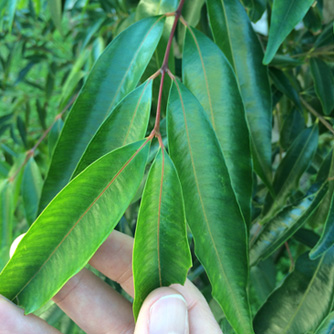
Long drooping foliage of the Waterhousea lilly pilly gives them a lovely weeping habit



